How to Merge Partitions in Windows 7 (32 and 64 bit)
| Workable Solutions | Step-by-step Troubleshooting |
|---|---|
| Windows Disk Management | Step 1. Right-click My Computer > Manage > Disk Management; Step 2. Right-click drive D...Full steps |
| Qiling Partition Master |
Merge partitions in Windows 7...Full steps Merge non-adjacent partitions in Windows 7...Full steps |
Why Merge Partitions Windows 7
Windows 7 users, actually more and more Windows 10 users are involved nowadays, once feel it necessary to extend a disk volume in order to hold more data, games, or programs. Some choose to directly resize a partition, while some choose to combine two partitions into a large one. Do you know in what circumstances people want to merge partitions? The following are some examples.
- The system C drive is running out of space. As a result, the computer becomes extremely slow, or the system starts freezing a lot.
- Too many hard drive partitions are scattered on a disk, making it difficult to locate files or make full use of every bit of hard drive space.
- There is unallocated space on the disk. It's helpful to add unallocated space to some partitions.
The displayed examples all refer to one problem: improper disk space distribution. Therefore, to utilize disk space carefully and efficiently, it's a good idea to merge partitions in Windows 7, 8 or 10. By combining two hard drive partitions into one can help create a new volume with sufficient free space, to minimize the hard drive numbers, as well as to solve the problem of low disk space warnings.
In general, there are two typical ways to merge partitions in Windows 7. One is the built-in Windows Disk Management and the other is third-party partition manager software.
How to Merge Partitions Windows 7 in Windows Disk Management
Windows 7 Disk Management doesn't provide the "Merge Volume" feature directly, but you can merge partitions by deleting a partition and then extending the other with unallocated space.
Requirements of Windows Disk Management for merging partitions:
- The two partitions must be adjacent.
- Both partitions should be formatted with NTFS
- You must delete a volume in order to extend the other
Combine two partitions in Disk Management:
Step 1. Right-click My Computer > Manage > Disk Management.
Step 2. Right-click drive D and select "Delete Volume". Drive C will be converted to unallocated space.
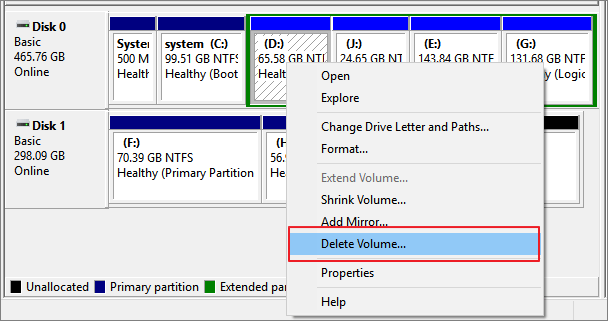
Step 3. Right-click drive C and select "Extend Volume". Follow the Extend Volume Wizard to add unallocated space to drive C.
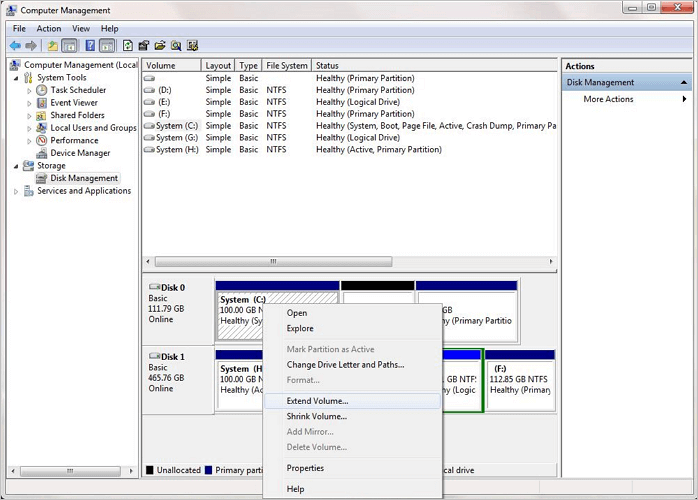
Step 4. Return to the Windows 7 Disk Management interface, you'll see drive C and D being a new bigger drive C.
You've successfully merge drive C and D into one partition by following the above instruction. However, there are still many restrictions that may prevent you from merging partitions. If you meet the problem that cannot extend volume or Extend Volume greyed out in Windows 7, fix it with the online tutorials. After troubleshooting, If you still can't merge partitions, or if you don't want to risk any data loss caused by deleting all partitions, you can use a professional partition manager to merge partitions more easily and safely.
How to Merge Partitions in Windows 7 with Qiling Partition Master
As mentioned above, Windows 7 built-in Disk Management tool requires you to delete the partition when you merge partitions with it. What's more, the two partitions have to locate next to each other. Instead of Disk Management, do you know how to merge two hard drive partitions without deleting partitions, formatting or losing data? Or can you combine non-adjacent partitions?
Here, Qiling partition magic software comes to help you merge partitions in Windows 7 without data loss. With this tool, you can directly merge two adjacent partitions without removing other partitions. Meanwhile, it supports all Windows users to merge non-adjacent partitions in a pretty flexible way. Carefully follow the instructions below, and try to merge partitions as you want.
Merge partitions in Windows 7:
Step 1: Select the target partition to backup it
Click "File backup" on Backup and recovery page and select the partition which you want to add space to backup it.
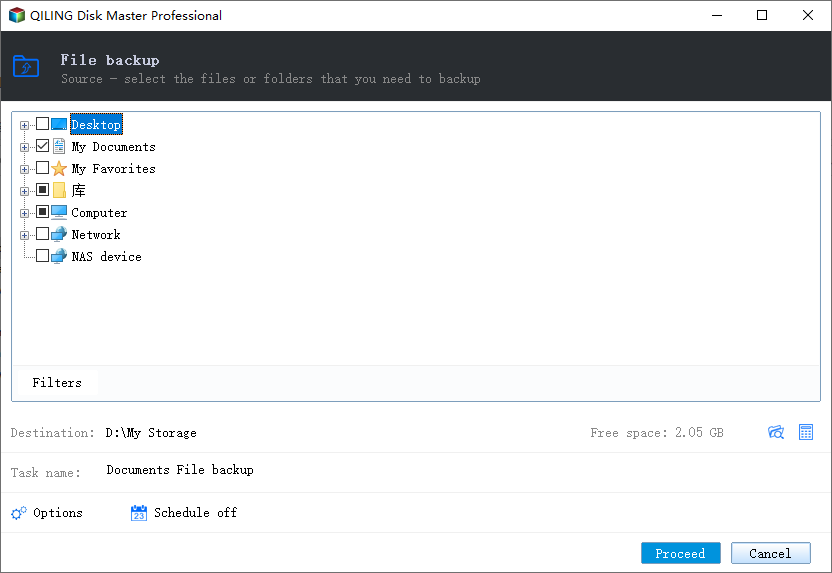
Step 2: Select target partition to delelte
Select the target partition in the Disk management page and click "Delete" to delete this partition.
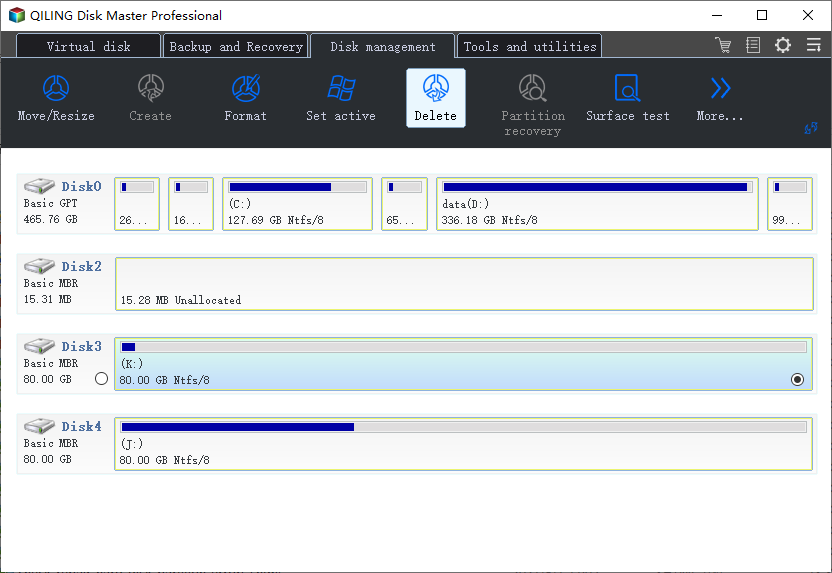
Step 3: Select neighbor partition to merge
Select one partition next to the former selected partition and click "Resize/Move" to continue.
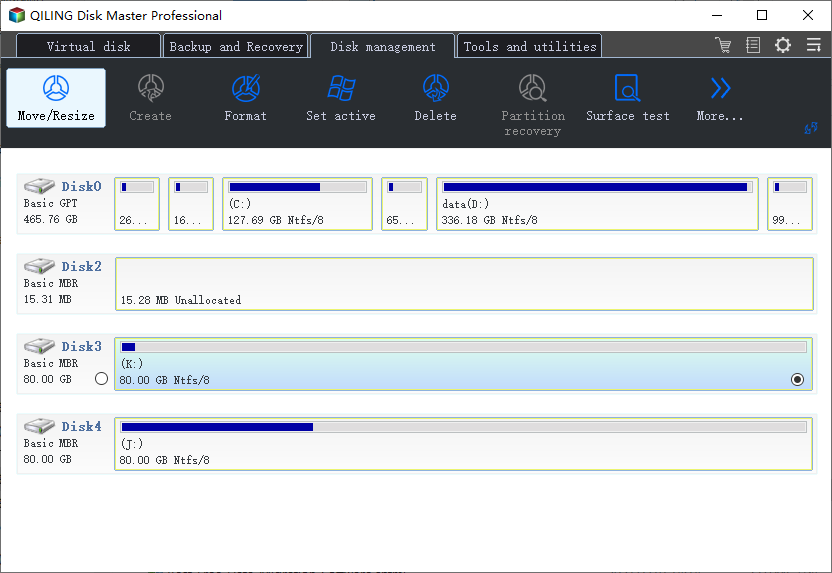
Step 4: Execute operation to merge partitions
Simply drag one of its ends to free up unallocated space. Once done, click "Proceed" to merge space.
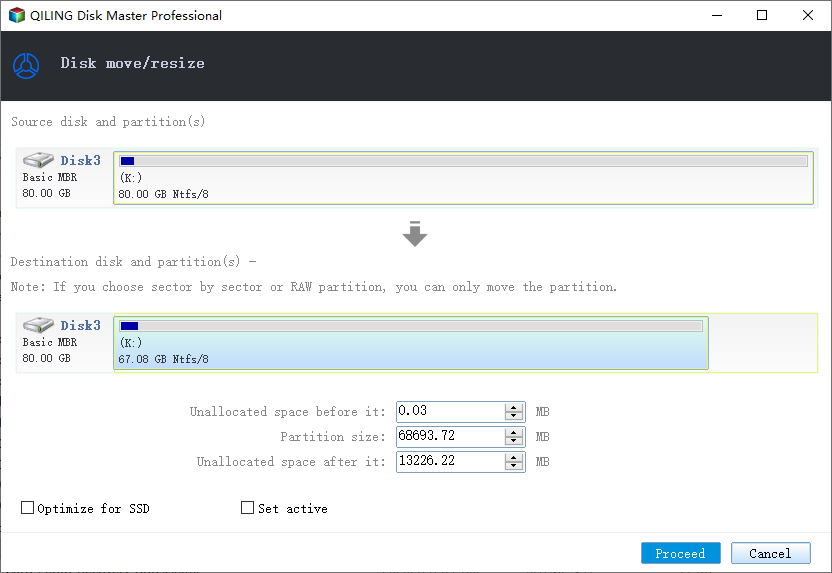
Step 5: Recovey files to this merge partition
Recovery target partition to this merge partition
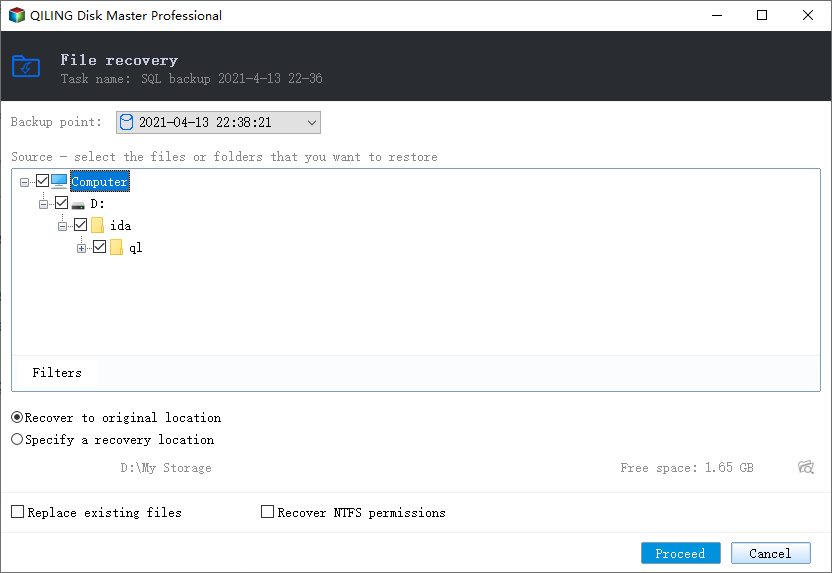
Disk Management vs. Qiling Partition Master
Disk Management is a useful tool for you to partition a hard drive, format a hard drive, change a drive letter, or perform various other disk-related tasks. It has both advantages and disadvantages. Here is a detailed comparison table that tells you the main features of the Windows 7 Disk Management Tool and Qiling partition software. Read it and choose the one that fits your needs.
| Features | Qiling Partition Master | Windows 7 Disk Management |
|---|---|---|
| Merge, delete, move, hide, label, check partition | √ | × |
| Copy dynamic volume, copy disk/partition | √ | × |
| Extend NTFS system partition without reboot | √ | √ |
| Create, delete, format, change the drive letter, set active | √ | √ |
| Extend/shrink FAT | √ | × |
| Extend/shrink NTFS | √ | √ |
| Partition Recovery, partition scheme | √ | × |
| Create Bootable Disks | √ | × |
| GPT disk | √ | √ |
Related Articles
- Resize Windows 10 Partition with Free Windows 10 Partition Manager
- 7+ Fixes for Windows Was Unable to Complete the Format in 2022
- 4 Solutions To Fix Bootmgr Is Missing Windows 11
- How to Clone HDD to 250GB/500GB SSD Without Reinstalling